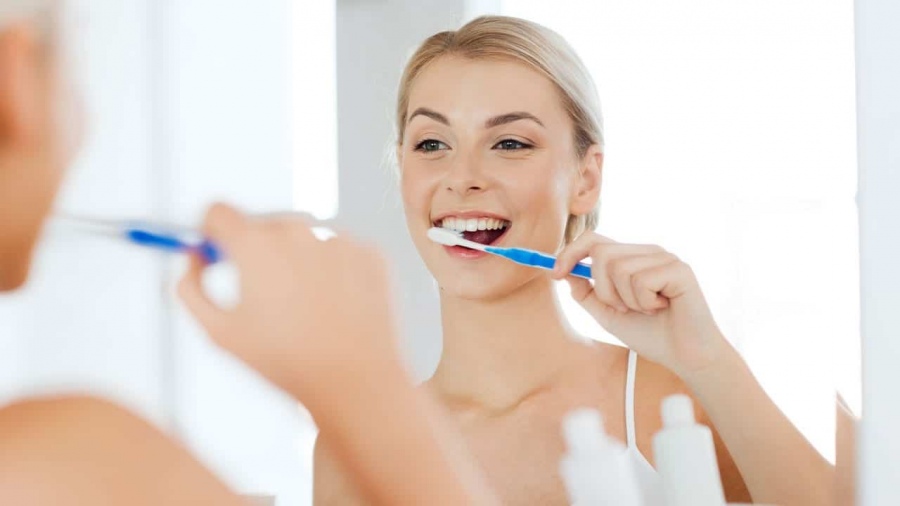Few things about your personal appearance make more of an impression than a mouth full of pearly white teeth. However, keeping your teeth shinning their brightest can take some serious effort if your diet contains a lot of foods and drinks that contribute to tooth stains.
What you eat and drink can have an enormous impact on the overall health of your teeth, and how white they appear. Fortunately, by limiting the number of harmful foods you eat, while introducing more stain fighting foods to your diet, you can reduce tooth stains that dim an otherwise bright smile. You can also take a number of cosmetic steps to help improve the whiteness of your smile.
Stain Causing Foods
As a general rule of thumb, you should consider any type of food or beverage that can stain your hands or clothes as potentially damaging to the color of your teeth. Some of the more common food and drink items that fall into this category include, tomato sauce, blueberries, cranberry juice, soy sauce, beets, red wine, coffee, tea, or soda. While most of these items might seem fairly obvious, the reason why they stain your teeth may surprise you.
Your teeth are coated in enamel, which ranks as the hardest substance found in the body. Enamel is actually clear, and the color of your teeth depends on the layer of dentin found underneath. However, when your enamel becomes stained, it can make your teeth appear dingy or discolored.
Coffee, soda, red wine, cranberries, and even tomatoes all contain high acid levels. When you eat or drink these types of items, you raise the acidity levels in your mouth, which allows the items you consume to color the enamel surface of your teeth. Coffee and red wine are especially bad for your teeth, as they also cause your mouth to become dehydrated.
When dehydrated, your mouth produces less saliva, which your body uses as a natural defense against mouth acidity. A dry mouth without saliva has no way of neutralizing these types of harmful acids. This is why the American Dental Association considers coffee and red wine to be “bad” for the health of your teeth.
To help reduce acidity, make sure you brush and floss after eating or drinking any stain causing items. If you don’t have time to brush, make sure you drink plenty of water, so you can rehydrate your mouth, and neutralize harmful acids. You should also consider cutting back on the consumption of stain causing foods and drinks, especially if your drink more than one or two cups of coffee or glasses of wine a day.
You can also limit the impact of certain stain causing beverages, such as ice tea, fruit juice, or soda, by drinking them through a straw. This helps keep the liquids away from the visible front surface of your teeth.
Stain Fighting Foods
Just as some foods can stain your teeth, others can gently clean your teeth of harmful acids while you eat. Apples, celery, cauliflower, carrots, hard types of cheese, broccoli, and pears contain low acid levels that won’t contribute to raising your mouth’s acidity. Eating these types of foods also help to increase the amount of saliva in your mouth, which, if you remember, naturally neutralizes mouth acids.
Chewing sugar-free gum after meals can also help to offset the damage caused by tooth-staining foods and drinks. Chewing gum after meals also helps to increase the amount of saliva in your mouth, and the ADA actually recommends chewing after meals as a way to reduce tooth decay.
When to Whiten
If stain-causing foods and drinks rank as some of your all time favorites, you might already have noticed a slight discoloration of your teeth’s natural color. Depending on the condition of your teeth, you might be able to restore their whiteness through teeth bleaching.
Tooth whitening treatments work well if your teeth are yellow or slightly dingy in color, but does little to teeth that have turned brown or grey. Yellow teeth are generally caused by the discoloration of tooth enamel, which is reversible, while brown or grey teeth generally indicate a discoloration of a tooth’s dentin. Unlike with enamel, teeth bleaching cannot affect the color of a tooth’s dentin.
Home whitening kits, toothpastes and mouthwashes that help whiten are some of the many over-the-counter treatments that are available. Your dentist may also offer professional, in-office tooth whitening treatments, as well. Talk to your dentist about what whitening procedure is right for you prior to beginning any treatment regimen.
Timothy Lemke blogs about how to keep your smile its brightest for Dr. Melissa Beadnell, a dentist in Portland OR at Beadnell Family Dentistry.




